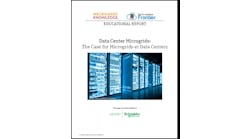Paul Gromer,Peregrine Group
Can a city of 105,000 people get to net zero carbon emissions? Cambridge, Massachusetts is going to find out.
Never a city to shirk a challenge, Cambridge is putting itself on a path to becoming a net zero community for carbon emissions from buildings. While breathtakingly ambitious to imagine, the goal of a net zero community is also breathtakingly simple to understand. Becoming net zero technically means two things:
- Greatly reducing energy use through aggressive energy efficiency measures
- Meeting the use that remains with renewable energy generation within the community
Cambridge hopes to power the entire city, and have net zero carbon emissions to show for it.
The goal of net zero emissions (a goal also commonly phrased as zero net energy or ZNE) has typically been adopted for individual buildings, not entire communities. Even achieving net zero just for one building is challenging enough.
| For specific examples of how buildings are getting to zero net energy, read How Massachusetts Buildings are Getting to Zero Net Energy and Zero Net Energy Buildings around the US. |
Ambitious both inside and outside the world of ZNE
In one sense, the Cambridge approach fits a growing trend in the zero net energy world. Logistics like roof size and the presence of shade can make it difficult or almost impossible to integrate renewables into a particular building. The 2014 Getting to Zero Update from NewBuildings.org notes that increasingly, net zero targets are adopted across multiple buildings to achieve efficiencies that elude a single-building focus. They note 18 district-scale projects, including 8 military properties, as well universities and community colleges.
But the scale of Cambridge’s ambition is impressive. The West Village at UC Davis, widely touted as the largest planned net zero community in the US, has made significant progress (87%) toward zero after a year of occupancy, but it’s not all the way there. With 3,000 students, 500 staff and faculty families, and some retail and commercial buildings, it’s an ambitious project, but it’s not even close to the scale of what Cambridge is trying to achieve with a diverse population of more than 105,000 people.
Outside the zero net energy world, the Cambridge goal is unique and very different from what most communities have attempted. At the community level, climate goals are typically set as a percentage reduction from a baseline. For example, New York City has set a goal of reducing greenhouse gas emissions 30% below 2005 levels by 2030. That is no small task, and the city has adopted a comprehensive plan to get there. Getting a city all the way to zero will require much, much more.
Cambridge is only just starting to develop its net zero plan, so the elements are not clear yet. But a plan to get to zero will likely include aggressive standards for new buildings, substantial construction of renewable generation within the city, and purchase of clean power generated elsewhere, at least as an interim measure. Although net zero will be very difficult to achieve, the goal’s simplicity and ambition may do more to engage the community than a lesser goal ever could. And this engagement could be the source of some real progress toward reduced energy used across the community, and a valid reason for taking on such a difficult task.
As climate goals go, net zero is far simpler than the common approach of setting a percentage reduction goal from a baseline. Percentage reduction goals raise lots of questions. Going back to New York City, we might ask:
- Why 30% and not 25% or 40%?
- What about the other 70%?
- Why was the baseline energy use set in 2005? Why not another year?
- What were the emissions in 2005? Was anyone even tracking emissions that year?
But zero, that’s something I can get my head around.
The ambition in the net zero goal adds to its appeal. Although a 30% reduction would actually be a huge accomplishment, aiming for 30% less feels a little like aiming for second place or even third. It’s hard to get excited about going for the bronze. Zero on the other hand feels like aiming for perfection. What could be more exciting than that?
Paul Gromer is the CEO and founder of Peregrine Energy Group.
Articles posted in Perspectives do not necessarily reflect the opinions of Energy Efficiency Markets or its staff.






